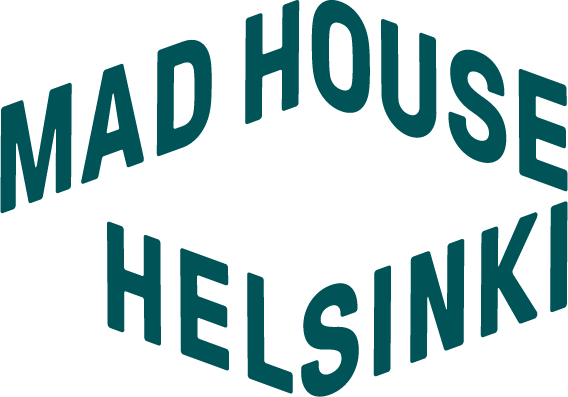Interview with Kaaos Company
Mad House: Kati, you're an invited choreographer for Kaaos Company at Principia. What has it been like working with Kaaos and what is special about the project?
Kati Raatikainen: The working process has been truly fascinating and educational. We pondered the starting points of the work together, and the then Artistic Director of Kaaos, Sally Davison, who was also involved in Principia in 2022, proposed air as the subject of exploration. Previously, Kaaos had created a piece in water. Sally was interested in how working with aerial acrobatics could expand the possibilities of movement. I am interested in the influence of various qualitative opposites on being and movement. In aerial acrobatics, air is not the only element; gravity and the weight of the body significantly affect the relationship between the human and the materials hanging in the air. Thus, in the piece, as in the world in general, we move in a gravitational field, encountering others and opening space for observing this principle.
As a choreographer, my starting point is to observe and allow space for encounters between people, things, and phenomena. I am interested in the basics of our corporeality: senses, perceptions, choices, interactions between people and other things. For me, there is always something to chew on in that as the starting point for a performance. Interest arises from how simplicity opens vistas into experientially vast spaces and creates layered relationships of meaning.
The diversity of the working group is special in both the piece and the process. Each performer has their own history and bodily relationship to the world; the spatial movement of two performers is made possible with a wheelchair. Principia is a unique performance where different contexts blend, and perhaps even more than dance, skill-based aerial acrobatics and contemporary circus are reshaped in our handling. We have not intentionally set out to unpack the history of circus, but I still see the piece in relation to it through the performers' bodily situations and the form of the performance.
MH: Kaaos Company has been a pioneer in inclusive and accessible dance in Finland, and you have been committed to this work since 2010. How has this been built, and how has your community formed?
Georgie Goater: Kaaos Company was established in 2010 by Sally Davison with Gunilla Sjövall, as an artistic expression of the inclusive dance scene they had been building since 2008 through holding weekly inclusive movement improvisation classes. These classes have been pivotal in forming our community, and are now in their 17th year of happening on Sundays with a vibrant active community and range of experienced facilitators. Our community has been continually forming together.
With different collaborators, board members and new voices coming through the community, an original intention holds true:
"creative potentials we find together give us all more diverse ways to be human in how we think, move and create artistic work."
Sally Davison (Artistic Director 2010-2023)
Noora Västinen: From the beginning, we have collaborated locally, nationally, and internationally with various organizations and dance and art festivals. We have also brought dance art to places where it is not accustomed to being seen as much, such as on the streets, in libraries, and in shopping centers. This has, in part, sparked interest and reached new audiences. Weekly adult dance and movement improvisation classes at Helsinki Cable Factory, as well as children's classes at Annantalo, have expanded our community, and for some dance enthusiasts, an entirely new career has opened up in the field of inclusive dance.
MH: How has the field of dance (for example, working opportunities and audiences) changed over these years? How does the work for inclusivity show, or does it show?
Noora Västinen: It has been a pleasure to notice that the perception of who (and what kind of body) can be a dancer, and who has the opportunity to perform, has, in my opinion, expanded over the past decade. Various job opportunities are influenced, of course, to a large extent by various grants, which fund and enable many dance projects, events, and residency periods. We have been fortunate to receive many grants, and many of our productions have become possible because of them.
